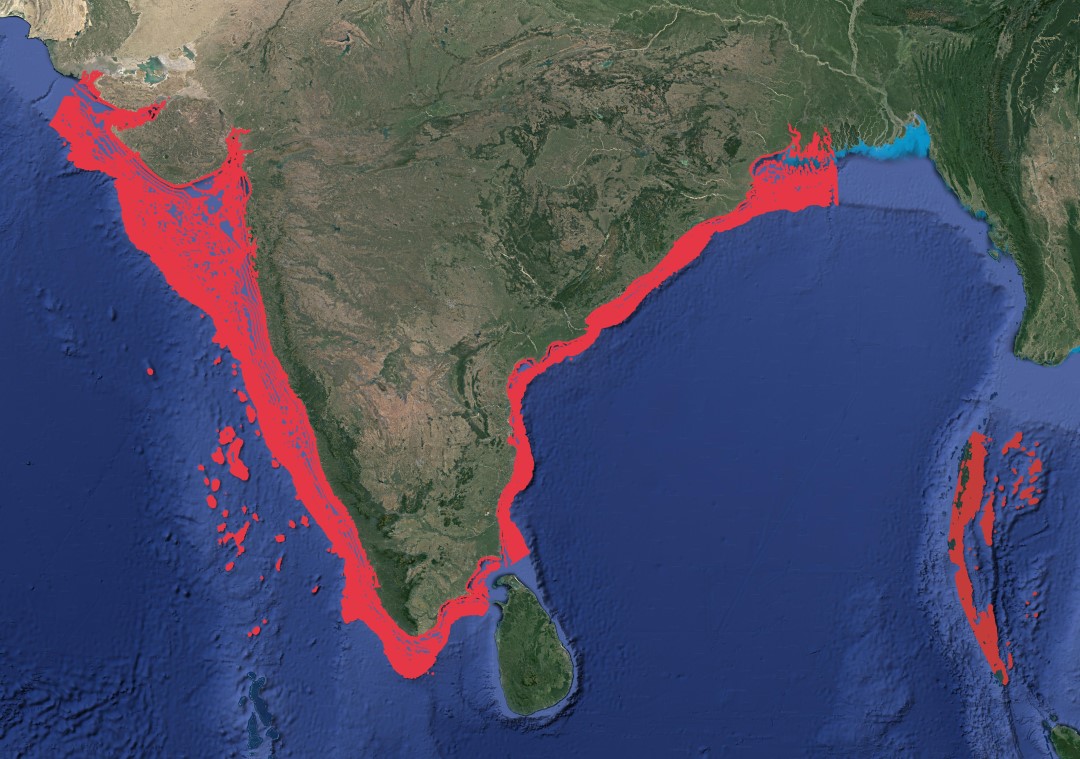Species Name
Shortfin Mako
Scientific Name
Isurus oxyrinchus
Family Name
Lamnidae
IUCN Status
Endangered
Snout is conical and pointed; teeth are long and awl-like frequently protrude from the mouth in larger specimens; caudal fin is lunate (crescent-shaped) with a single keel on the caudal peduncle
Biology
Length: The shortfin mako shark is one of the fastest sharks in the ocean and can grow to impressive lengths. On average, adult shortfin makos reach lengths of about 10 to 12 feet (3 to 3.6 meters). However, some individuals have been known to reach lengths of up to 14 feet (4.3 meters) or even more.
Gestation period: 15 to 18 months
Littter size: Shortfin mako sharks are viviparous, which means they give birth to live young instead of laying eggs. The litter size can vary, but it typically ranges from 4 to 18 pups.
Life Expectancy: The life expectancy of shortfin mako sharks in the wild is not precisely known due to the challenges of studying these elusive animals in their natural environment. However, it is believed that they can live for several decades, with estimates suggesting a lifespan of up to 25 to 30 years.
Diet: Shortfin mako sharks are highly efficient predators known for their incredible speed and agility. They have a diverse diet that includes a wide range of prey, such as small bony fish, squid, and other sharks. They are particularly well-adapted to catch fast-swimming prey, and their diet may vary depending on their age and availability of food in their habitat.
Habitat and Distribution
Habitat: Shortfin mako sharks are highly migratory and can be found in both oceanic and coastal environments. They prefer temperate and tropical waters, and they are known to venture into pelagic, epipelagic, and mesopelagic zones. These sharks are known for their exceptional speed and are often found in areas with abundant prey species.
Distribution: The shortfin mako shark has a wide distribution across the globe. It can be found in various oceans, including the Atlantic, Indian, and Pacific Oceans. They are known to occur in both offshore and inshore waters. The species is particularly common in areas with a high concentration of prey, such as tuna and other schooling fish.
Known landing centres: Junglighat, Burmanallah, Wandoor, Dignabad and Cochin Fisheries Harbour
Depth: Shortfin mako sharks are capable of inhabiting a wide range of depths. While they are often associated with the surface waters due to their pelagic nature, they are capable of diving to considerable depths. These sharks have been recorded at depths of up to 500 meters (approximately 1,640 feet) in pursuit of prey.
Commercial Value
Shortfin mako is considered one of the greatest gamefishes of the world and is listed such by the International Game Fish Association (IGFA). They are also a commercially sought after fish for their meat, fins are used for shark-fin soup and liver oil is extracted as a source of vitamin A.
Threats
Overexploitation is one of these species' major threats. When caught as bycatch, it is retained and sold off locally.
References
- Compagno, L.J.V., 1984. FAO Species Catalogue. Vol. 4. Sharks of the world. An annotated and illustrated catalogue of shark species known to date. Part 1 - Hexanchiformes to Lamniformes. FAO Fish. Synop. 125(4/1):1-249. Rome, FAO.
- Natanson, Lisa & Kohler, Nancy & Ardizzone, Daniele & Cailliet, Gregor & Wintner, Sabine & Mollet, Henry. (2007). Validated age and growth estimates for the shortfin mako, Isurus oxyrinchus, in the North Atlantic Ocean. 10.1007/978-1-4020-5570-6_16.
- Stevens, J. D. (2008). The biology and ecology of the shortfin mako shark, Isurus oxyrinchus. In Sharks of the open ocean: biology, fisheries and conservation (pp. 87– 94). Hoboken: Blackwell publishing. https://doi.org/10.1016/B978-008043716-3/50005-1



